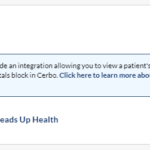by Dr John Limansky | Jul 3, 2023 | Cholesterol, HDL Map (Boston Heart)
ApoA-I is a protein that is produced by the liver and intestines. It provides structure to the HDL molecule (the “good” cholesterol) and activates enzymes necessary for this process to take place.
This test itself measures the number of ApoA-I proteins still available to form HDL. Lower levels of Apo-A-I suggest an increased risk of developing cardiovascular disease.
by Dr John Limansky | Jul 3, 2023 | Basic Lipid Panel, Cholesterol, Lipid Panel, Primary Health Markers, Weight Loss Markers
LDL is one of the components in the basic lipid panel. The basic lipid panel is a routine screening test that measures the amount of lipids (or fats) that are present in the blood. The two most important lipids are cholesterol and triglycerides. Our bodies use these as cellular building blocks as well as a source of energy. Abnormal levels may lead to a build-up of cholesterol “plaques” within blood vessel walls, which cause the vessels to harden in a process called atherosclerosis. Atherosclerosis, when present, significantly increases your risk of developing cardiovascular disease (CVD). The basic lipid panel provides valuable information and when combined with other blood tests and risk factor assessment (age, smoking status, family history, etc.) it guides healthcare providers in their treatment recommendations.
The basic lipid panel includes total cholesterol, which is an estimate of the body’s entire cholesterol content, low-density lipoproteins (LDL, or the “bad” cholesterol), high-density lipoproteins (HDL or “Good” Cholesterol), as well as triglycerides. Other subtypes of lipids are often reported as well.
by Dr John Limansky | Jul 3, 2023 | Basic Lipid Panel, Cholesterol, Lipid Panel
Non-HDL cholesterol is calculated by subtracting HDL from total cholesterol. Non-HDL better depicts the amount of atherogenic, or “bad” cholesterol circulating in the body. In addition to LDL, non-HDL includes very low-density lipoproteins (VLDLs) and remnant lipoproteins, which are significant contributors to atherosclerosis.
Non-HDL is not always necessary to report but becomes particularly useful in certain circumstances. For example, the total cholesterol value includes both HDL and LDL. An elevated HDL in the presence of low/normal LDL can make the total cholesterol value appear elevated. However, the non-HDL is normal in this case, which suggests that HDL was responsible for the increased total cholesterol value.
Secondly, non-HDL is important when triglyceride levels are elevated, which is common in conditions like diabetes, morbid obesity, and other metabolic disorders. HDL and LDL may be normal in this case, but because VLDL is elevated, the non-HDL value is also elevated. Relying solely on LDL might lead to mislabeling high-risk patients as low-risk.
by Dr John Limansky | Jul 3, 2023 | Basic Lipid Panel, Cholesterol
Very low-density lipoproteins are sometimes reported on basic lipid panel. This panel is a routine screening test that measures the amount of lipids (or fats) that are present in the blood. The two most important lipids are cholesterol and triglycerides. Our bodies use these as cellular building blocks as well as a source of energy. Abnormal levels may lead to a build-up of cholesterol “plaques” within blood vessel walls, which cause the vessels to harden in a process called atherosclerosis. Atherosclerosis, when present, significantly increases your risk of developing cardiovascular disease (CVD). The basic lipid panel provides valuable information and when combined with other blood tests and risk factor assessment (age, smoking status, family history, etc.) it guides healthcare providers in their treatment recommendations.
The basic lipid panel includes total cholesterol, which is an estimate of the body’s entire cholesterol content, low-density lipoproteins (LDL, or the “bad” cholesterol), high-density lipoproteins (HDL or “Good” Cholesterol), as well as triglycerides. Other subtypes of lipids are often reported as well.
by Dr John Limansky | Jul 3, 2023 | Advanced Lipid Panel (Cardio IQ), Apolipoproteins, Cholesterol
The Cardio IQ Advanced Lipid Panel is similar to the NMR LipoProfile and both characterize lipoprotein subparticle size and number. The four most significant particle subtypes are included in this panel and include LDL particle number, Small and Medium LDL particle number, and Large HDL particle numbers. Large HDL particles are protective, so higher numbers are more desirable. For the other three, elevated levels increase your risk of developing a cardiometabolic disease.
The key difference in the Cardio IQ test versus NMR is how each test characterizes subparticle size. Cardio IQ reports two size patterns, or phenotypes (A and B). Pattern B is reported when the smaller diameter particles predominate (Small LDL, specifically) and are at increased risk. Pattern A, on the other hand, suggests a predominance of Large LDL particles.
by Dr John Limansky | Jun 8, 2023 | Basic Lipid Panel, Cholesterol, Lipid Panel, Uncategorized
ng_dsp1}










